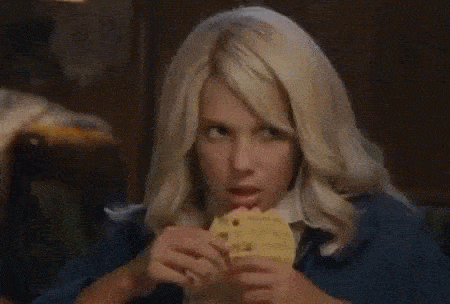Stranger Things
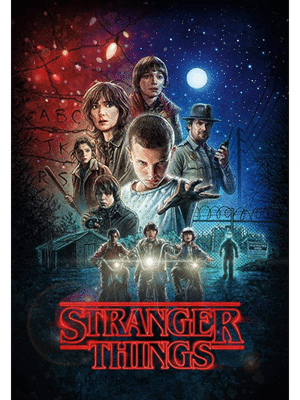
TV-14, (2016-2025), Drama/Fantasy, 51m
Table of Contents
What Is Stranger Things About?
Kids in a small town find a mysterious girl with special powers while confronting forces from the Upside Down.
Why You Should Watch Stranger Things
Stranger Things, the brainchild of The Duffer Brothers, catapulted onto our screens in 2016, quickly becoming a cultural phenomenon. It’s easy to initially label the series as a mere nostalgic trip to the ’80s, but this would do a disservice to its masterfully crafted narrative, memorable characters, and the deeper themes it explores.
Set in the fictional town of Hawkins, Indiana, Stranger Things thrusts us into a world where the lines between scientific experimentation, supernatural occurrences, and the trials of growing up are blurred. At its core, the show is an intricate dance of genres: part science fiction, part supernatural thriller, and, most notably, a heartwarming coming-of-age story.
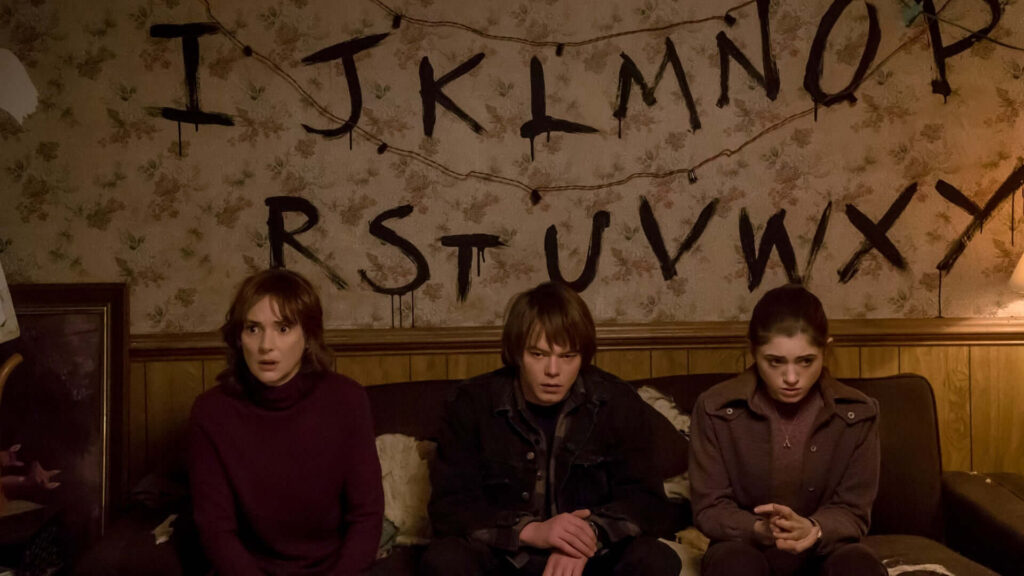
One of the series’ standout features is its ensemble cast. The group of young protagonists – Mike, Eleven, Lucas, Dustin, and Will – breathe life into the narrative with performances that are both authentic and captivating. Millie Bobby Brown’s portrayal of Eleven, a young girl with psychokinetic abilities subjected to scientific experiments, is especially riveting. Her journey from a fearful and manipulated child to a young woman discovering herself is both heartrending and empowering. Yet, the charm isn’t limited to the kids. Characters like Joyce Byers, Sheriff Hopper, and even the often antagonistic Billy, are multi-dimensional, each battling their own demons and past traumas.
The show’s visual and auditory aesthetics deserve special mention. Its cinematography, a delicate blend of contemporary techniques and ’80s filmic styles, works in tandem with an evocative soundtrack. This includes an atmospheric synth score by Kyle Dixon and Michael Stein, as well as a bevy of ’80s classics that transport viewers straight into the era of arcade games, walkie-talkies, and Dungeons & Dragons. The attention to detail, from the Starcourt Mall’s neon lights to the eerie stillness of the Upside Down, speaks volumes of the creators’ dedication.
But perhaps the most striking aspect of Stranger Things is its ability to balance its dark, supernatural elements with moments of lightness and humor. While the residents of Hawkins grapple with malevolent entities from the Upside Down and unscrupulous government agencies, they also navigate school dances, young love, and friendship feuds. This juxtaposition accentuates the series’ underlying themes of loyalty, resilience, and the enduring power of human connections.

The strength of Stranger Things lies not just in its supernatural mysteries but in its poignant exploration of human experiences. It reminds viewers of a time when friendships were forged in backyards and basements, and when every bike ride felt like an adventure. Simultaneously, it delves into universal struggles, from the pains of adolescence to the complexities of familial bonds.
Stranger Things is more than its nostalgic veneer. It is a testament to storytelling that resonates, characters that endear, and a world that, while filled with monsters and mayhem, reflects our own in its joys, sorrows, and hopes. For those yet to venture into Hawkins, Indiana, the journey promises to be both thrilling and deeply human. For longtime fans, the series stands as a beacon of modern television’s potential to captivate and connect.
The Theme of Stranger Things
Stranger Things is not just an exercise in ’80s nostalgia; it is a tapestry of interwoven themes that touch on facets of human existence, societal norms, and metaphysical quandaries. These themes elevate the show from being just another supernatural thriller to a narrative that resonates deeply with audiences of all ages.
At the heart of Stranger Things lies the bond shared by the central group of kids – Mike, Eleven, Lucas, Dustin, and Will. This bond is tested repeatedly, be it by otherworldly threats like the Demogorgon and the Mind Flayer or by more mundane challenges like growing up and growing apart. The show underscores the value of sticking together, emphasizing that collective strength often surpasses individual might. As the kids face down monsters, government conspiracies, and teenage angst, their unwavering commitment to one another stands as a testament to the enduring power of friendship.
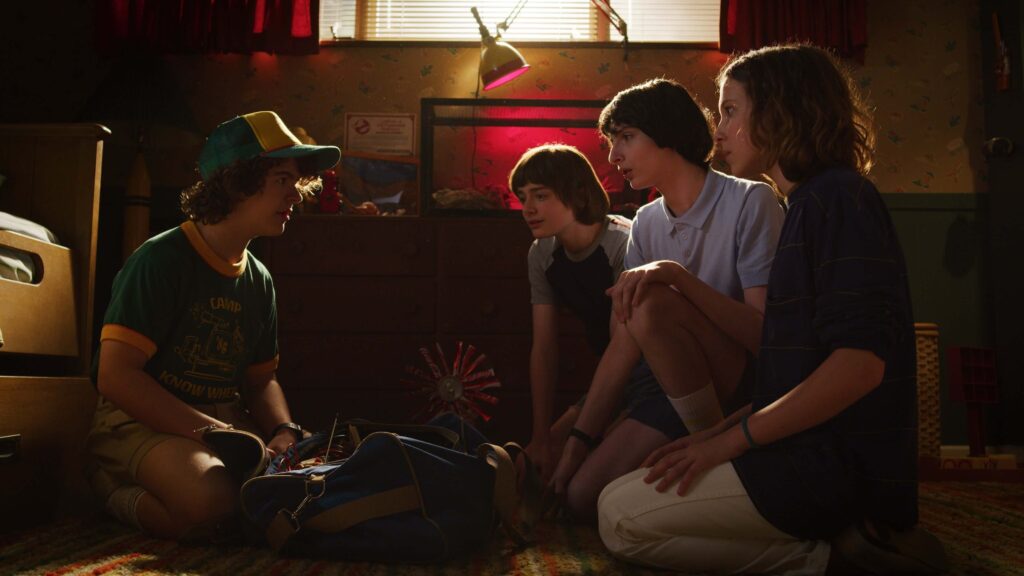
The residents of Hawkins, Indiana, face myriad losses – from the disappearance (and return) of Will Byers to the tragic history of Eleven and her mother. The series doesn’t shy away from exploring the deep-seated trauma that such events can cause. Joyce Byers’ near manic need to find and protect her son, Will’s PTSD following his time in the Upside Down, and Eleven’s struggle with her past and identity are poignant examples. Through these arcs, Stranger Things illuminates the lasting effects of trauma and the long, often tumultuous road to healing.
The existence of the Upside Down – a parallel and malevolent dimension – serves as a metaphor for the vast unknowns that surround us. The human drive to explore, understand, and often exploit these unknowns is a recurring motif. From Hawkins Lab’s experiments on Eleven to the kids’ forays into the mysterious dimension, the series delves into the consequences of unchecked curiosity. It poses questions about ethical boundaries in the pursuit of knowledge and the potential fallout when those boundaries are crossed.

As the series progresses, the young protagonists grapple with the trials and tribulations of adolescence. Relationships, changing dynamics, identity struggles, and the looming shadow of adulthood all come into play. The supernatural events of Hawkins often run parallel to these very human challenges. Eleven’s journey, in particular, mirrors the tumultuous path of self-discovery many undertake during their teenage years, from seeking her origins to finding a place she can truly call home.
The shady undertakings at Hawkins Lab and the government’s attempts to cover up its mistakes play a significant role in the narrative. These elements echo the Cold War era’s societal fears, where distrust of governmental institutions and concerns about their secretive experiments were rife. Stranger Things taps into these anxieties, highlighting the lengths to which power structures might go to protect their interests and the dangers of unchecked authority.

Whether it’s the Byers’ tight-knit bond, the complex relationship between Eleven and her “Papa” Dr. Brenner, or Hopper’s paternal feelings toward Eleven, family ties are a recurrent theme. The series delves into the many shapes families can take, emphasizing that often, family isn’t just about blood but about the connections we choose to foster and maintain.
The Cinematography of Stranger Things
Stranger Things is not just a tour de force of storytelling but also a masterclass in cinematography, seamlessly blending elements of 1980s nostalgia with contemporary visual techniques. The show’s visual aesthetic pays homage to the era’s cinematic luminaries such as Steven Spielberg, John Carpenter, and Stephen King, encapsulating a vintage feel while employing modern technology.
From the outset, the series’ color palette is intentionally muted, a nod to the look of many 1980s films. Rich in earthy browns, murky greens, and dark blues, the show captures the suburban serenity of Hawkins, Indiana. But juxtaposed against this are the saturated reds and eerie neon glows of the Upside Down, emphasizing the stark contrast between the real world and its dark parallel. The Upside Down, with its floating particulate matter and ever-present fog, evokes a sense of unease and foreboding, a place that is both familiar and alien.
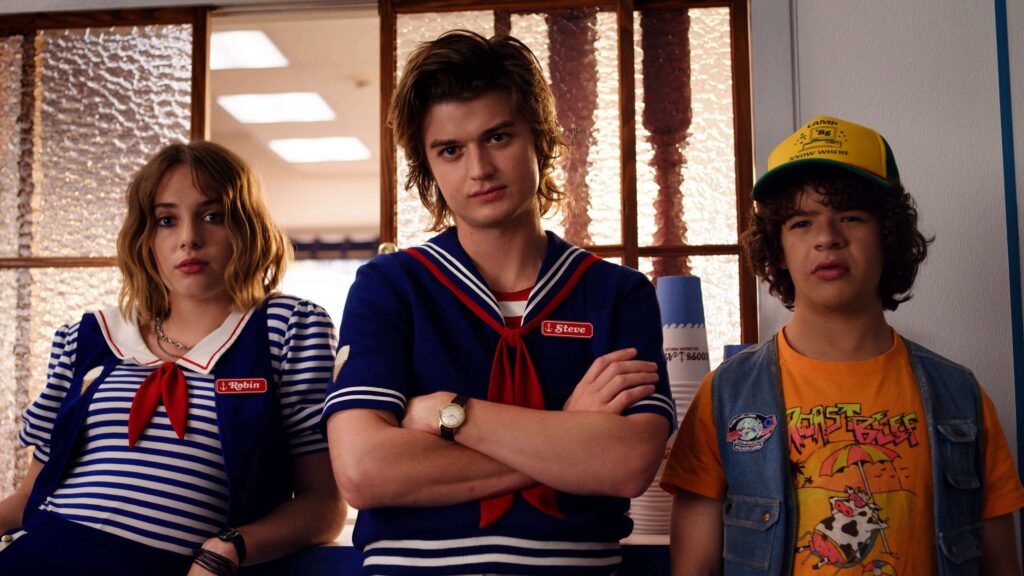
One of the hallmarks of Stranger Things is its masterful use of practical lighting. Scenes set during the night, especially those in the woods, often rely on flashlights, vehicle headlights, or moonlight. This not only ratchets up the suspense, given the limited field of vision, but also echoes a cinematic style prevalent in 1980s horror and adventure films. The Christmas lights strung up by Joyce Byers in her frantic attempt to communicate with her missing son, Will, is another exemplary use of practical lighting. The colorful bulbs pulsate with urgency and fear, serving both as a plot device and a visual metaphor for the bridge between dimensions.
Camera movement in Stranger Things is deliberate and often evokes a sense of voyeurism. Static shots, slow zooms, and tracking shots are frequently employed, allowing scenes to breathe while drawing viewers into the intimate world of the characters. There’s an inherent restraint in the cinematography, avoiding overly frenetic movement, which allows the mystery and tension to build naturally. However, when action does ensue, the camera isn’t shy about following the characters, be it kids on bikes being chased by government agents or a showdown with otherworldly monsters.
The series also doesn’t shy away from symmetrical framing, reminiscent of Wes Anderson, but used in a manner that heightens tension. Characters are often centered, with the world looming large around them, emphasizing their vulnerability or isolation. This is particularly noticeable in scenes involving Eleven, the young girl with psychokinetic abilities. Whether she’s in the vast, black void of her mind or the sterile white confines of the Hawkins Laboratory, the framing underscores her solitude and the weight of her powers.

Special mention must be made of the series’ transitions, which frequently employ match cuts and clever juxtapositions, linking scenes and characters in thematic or visual ways. This serves both as a storytelling device and as a nod to the editing techniques of the past.
The cinematography of Stranger Things is a blend of homage and innovation. It respects the visual storytelling methods of the 1980s while bringing them into the modern era with a fresh twist. By doing so, it doesn’t just cater to those nostalgic for the past but also resonates with a new generation of viewers, making it universally compelling. Through its visuals, the show effectively blurs the lines between the familiar and the strange, pulling audiences into its enchanting narrative world.
The Soundtrack of Stranger Things
The soundtrack of Stranger Things is a sonic journey into the 1980s, meticulously crafted to evoke the spirit of that era while reinforcing the show’s themes of friendship, adventure, and supernatural intrigue. Comprised of both an original score and a selection of iconic tracks from the ’80s, the show’s musical choices enhance its nostalgic aesthetic and emotional resonance.
The original score, crafted by Kyle Dixon and Michael Stein of the electronic band S U R V I V E, is characterized by its moody synthesizer-driven pieces, reminiscent of John Carpenter’s film scores. These compositions lend Stranger Things an eerie ambience, enhancing scenes of tension, mystery, and otherworldly encounters. The main theme, instantly recognizable with its pulsing rhythm and haunting melody, encapsulates the series’ blend of suspense and heart.
Alongside this atmospheric score, Stranger Things boasts an array of popular ’80s hits that anchor the series in its time period and offer moments of levity, emotion, or energy. Some of the notable songs include:
- “Should I Stay or Should I Go” by The Clash – A recurring song that holds significance for the Byers family.
- “Time After Time” by Cyndi Lauper – Played during moments of reflection and connection.
- “Every Breath You Take” by The Police – Featured in a school dance scene, encapsulating young love and longing.
- “Heroes” by David Bowie – Used to poignant effect during a crucial moment in the series.
- “Africa” by Toto – A beloved classic that offers a breather from the show’s tension.
- “Material Girl” by Madonna – This iconic song captures the pop essence of the mid-’80s and can be heard as Eleven and Max have a shopping spree in the Starcourt Mall.
- “Never Ending Story” by Limahl – In a memorable moment from the series, Dustin and his girlfriend Suzie sing this as a duet over the radio, much to the bemusement of their friends
- “She’s Got You” by Patsy Cline – Though not an ’80s song, it’s a classic that’s featured in a touching scene between Hopper and Joyce.
- “Radio Ga Ga” by Queen – This song plays during the third season, showcasing the era’s rock vibes while the kids navigate their adventures.
- “Sunshine On My Shoulders” by John Denver – Another song that predates the ’80s, but its inclusion in the series provides a warm and poignant backdrop to a scene between Billy and his memories of his mother.
The Stranger Things soundtrack is both a tribute to the 1980s and an integral part of the series’ identity, seamlessly intertwining with its narrative and characters.
Listen to a playlist inspired by the series below
The Cast of Stranger Things
- Millie Bobby Brown as Eleven – A young girl with psychokinetic abilities who escaped from a government lab. She has a distinct shaved head in the first season and loves Eggo waffles.
- Finn Wolfhard as Mike Wheeler – One of the main kids in the group. He befriends Eleven and eventually develops a romantic relationship with her. Mike is compassionate and fiercely loyal to his friends.
- Gaten Matarazzo as Dustin Henderson – Another member of the boys’ group, Dustin is known for his infectious laughter, lisp, and his set of baby teeth that took a long time to come in.
- Caleb McLaughlin as Lucas Sinclair – Lucas is outspoken and sometimes skeptical, especially when Eleven first joins the group. He’s another core member of the boys’ group.
- Noah Schnapp as Will Byers – The show’s initial plot revolves around his mysterious disappearance.
- Natalia Dyer as Nancy Wheeler- Mike’s older sister. She’s a high school student who gets involved in the supernatural events of the town, particularly after her friend Barb disappears.
- Charlie Heaton as Jonathan Byers – Will’s older brother. He’s quiet and introverted but becomes one of the central figures in the search for Will. He develops a bond with Nancy.
- Cara Buono as Karen Wheeler – Mother of Mike, Nancy, and Holly Wheeler. She’s mostly in the background but cares deeply for her family.
- Matthew Modine as Dr. Martin Brenner – The primary antagonist of the first season. He’s in charge of the government lab that experimented on Eleven.
- David Harbour as Chief Jim Hopper – The chief of police in Hawkins, Indiana. Initially skeptical about the supernatural events, he becomes a central figure in the fight against the threats from the Upside Down.
- Winona Ryder as Joyce Byers – Will and Jonathan’s mother. She’s determined and will stop at nothing to find her son when he goes missing.
- Sadie Sink as Maxine “Max” Mayfield – Introduced in the second season, she’s a new girl in town with a troubled family background. She becomes part of the main kids’ group.
- Dacre Montgomery as Billy Hargrove- Max’s step-brother introduced in the second season. He’s antagonistic and has a violent streak but has a deeper backstory that gets explored.
- Joe Keery as Steve Harrington- Nancy’s boyfriend in the first season, but his character evolves significantly throughout the series.
- Priah Ferguson as Erica Sinclair – Lucas’s younger sister, she has a sassy personality and eventually plays a more significant role in the group’s adventures.

The Filmmakers of Stranger Things
Stranger Things was created, written, and directed by The Duffer Brothers, Matt Duffer and Ross Duffer. They are the primary visionaries behind the show, serving as the showrunners, writers, directors, and executive producers.
While the Duffer Brothers are the main driving force behind Stranger Things, several other key individuals have contributed to its production:
- Shawn Levy – An executive producer who has also directed several episodes of the series. His production company, 21 Laps Entertainment, is one of the primary producers of the show.
- Dan Cohen – Executive producer from 21 Laps Entertainment.
- Iain Paterson – Producer for the series.
- Karl Gajdusek – Served as an executive producer in the show’s first season.
- Cindy Holland – An executive at Netflix who played a significant role in green-lighting and overseeing the show.
- Curtis Gwinn – Producer and writer for some episodes.
- Paul Dichter – Staff writer on the series.

Peanut Butter Waffles

Inspiration
Eleven’s Love For Waffles
